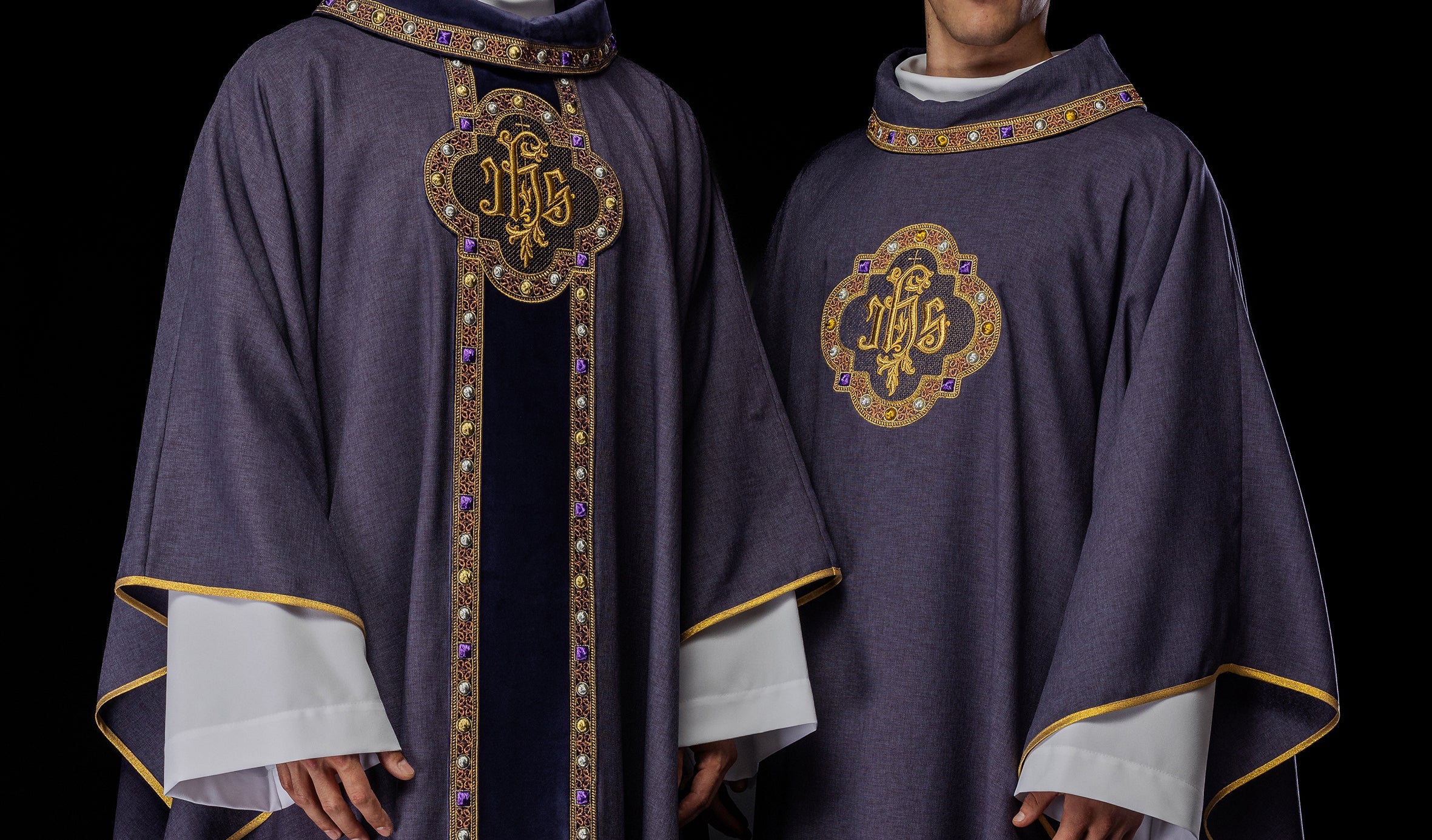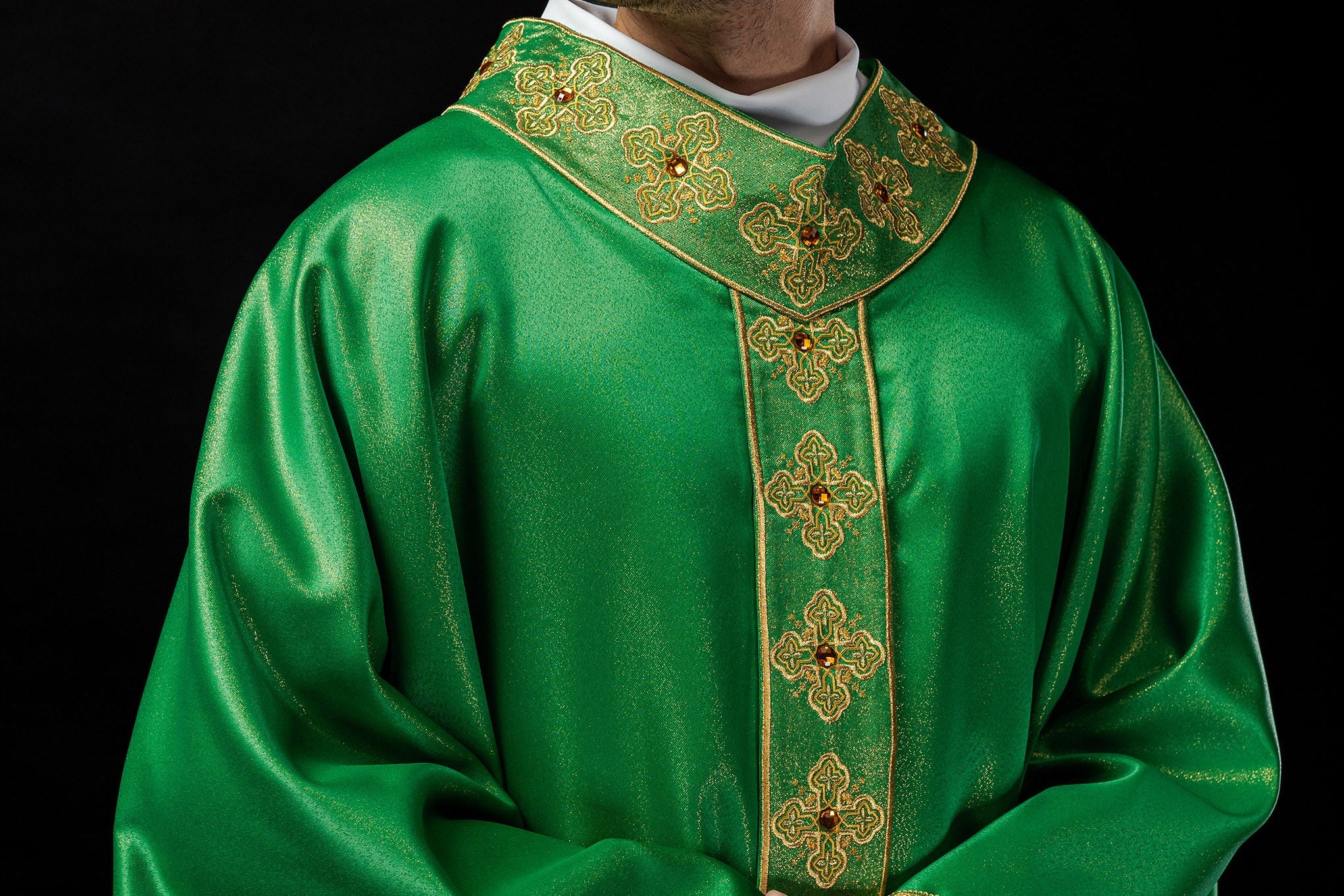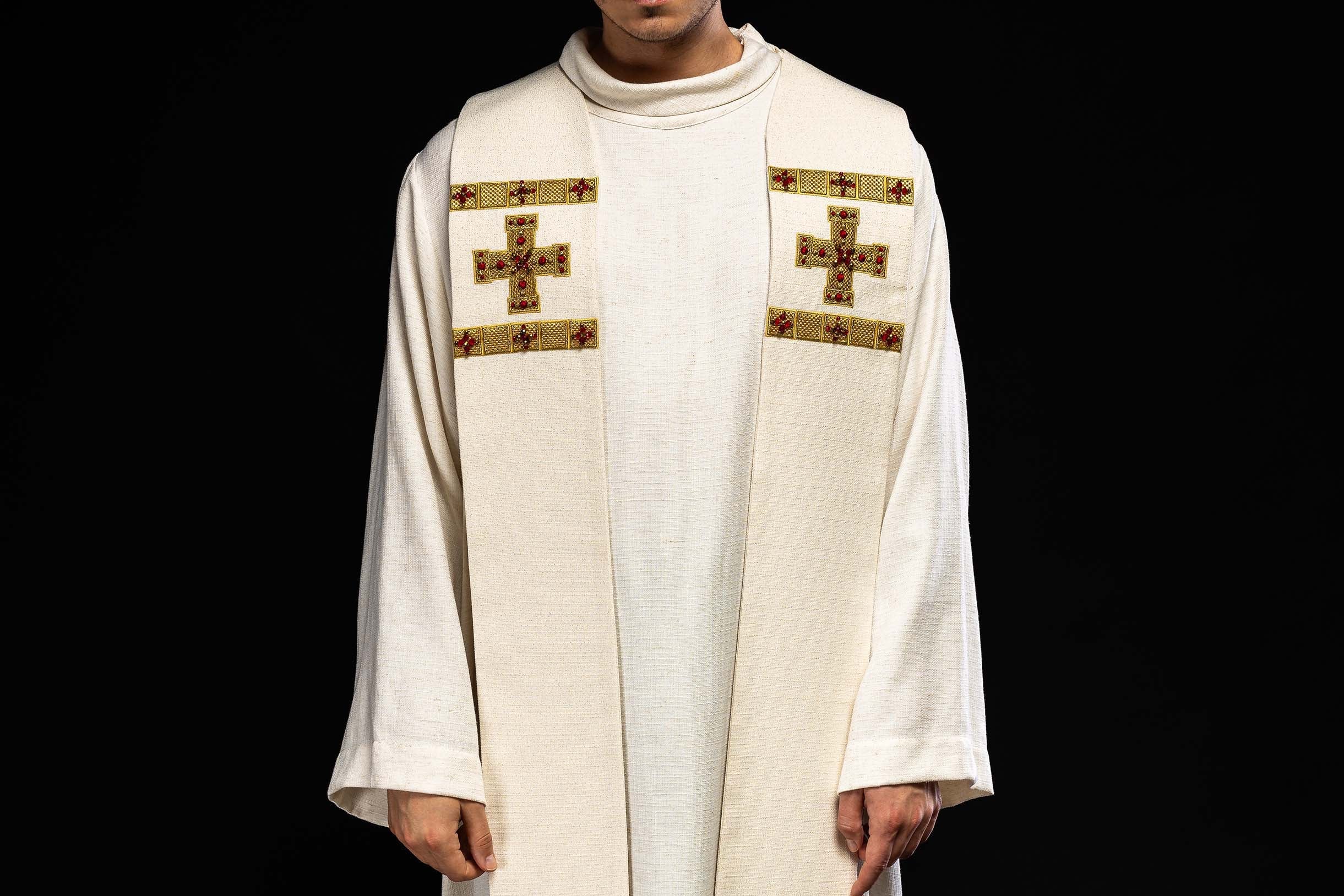
Can a priest have their own chasuble, independent of the parish?
Can a Priest Have His Own Chasuble, Independent of the Parish?
The question of a priest having his own chasuble, independent of parish resources, is a topic that often comes up in discussions among clergy. The answer to this question is yes, but it involves several important legal, liturgical, and practical aspects. Owning a chasuble can be an expression of personal piety for a priest, showing attention to the aesthetics of the liturgy and responding to individual needs. HAFTINA TEXTILE GROUP SP. Z O. O., as an experienced manufacturer of liturgical vestments, offers a wide selection of high-quality chasubles that can meet these expectations.
Chasuble as an Element of a Priest's Personal Equipment
According to canon law and the tradition of the Church, a priest has the right to own his own liturgical vestments, including a chasuble. There are no regulations prohibiting such ownership. On the contrary, in many situations, it is a beneficial solution, both for the clergyman himself and for the parish, which may be relieved of the obligation to provide a full set of vestments.
Financial Matters and Responsibility for the Chasuble
Purchasing one's own chasuble is usually an individual investment. The priest can acquire the vestment with his own funds, receive it as a gift from family, community, or church organizations, or the funds for this purpose may come from a diocesan or parish fund, if such is the decision of the local church authorities. Responsibility for the condition, maintenance, and storage of one's own chasuble rests with its owner.
Haftina Chasubles – Quality and Symbolism for Personal Choice
Choosing your own chasuble is an excellent opportunity to focus on quality and beauty that will enhance the liturgical celebration. The online store haftinausa.com, belonging to HAFTINA TEXTILE GROUP SP. Z O. O., offers a rich assortment of chasubles made of the best materials, with attention to every detail of the embroidery. Various designs, colors, and styles are available, allowing you to match the chasuble to your individual preferences and needs.
What Types of Chasubles Are Available?
HAFTINA offers a wide selection of chasubles, from traditional to modern, meeting various liturgical and aesthetic requirements. Chasubles made of high-quality fabrics are available, often decorated with intricate computer or hand embroidery. You can choose from:
- Chasubles in traditional liturgical colors (white, green, red, purple, pink, black),
- Occasional chasubles, referring to specific holidays or events (e.g., Christmas, Easter, Jubilee),
- Chasubles with images of saints, the Mother of God, or Eucharistic motifs,
- Chasubles made of various materials, such as silk, velvet, polyester, or specialized liturgical fabrics, ensuring wearing comfort.
Why Is It Worth Investing in Your Own Chasuble?
Owning your own chasuble gives the priest greater freedom of choice and the ability to match the vestment to the occasion, the celebrant, or even his own well-being. It can also be a way to build a personal connection with the liturgy and emphasize its unique character. Haftina chasubles are designed to meet these requirements, offering not only aesthetics but also durability and ease of use.
What to Consider When Choosing Your Own Chasuble?
When choosing your own chasuble, it is worth paying attention to a few key aspects:
- Material: It should be breathable, easy to care for, and pleasant to the touch to ensure comfort during long celebrations.
- Embroidery: Should it be traditional, modern, using gold or silver threads, or perhaps decorated with stones? Embroidery is the heart of the chasuble and gives it a unique character.
- Color Scheme: The choice of color should be in accordance with the liturgical calendar or occasion, but having your own, multi-colored chasubles allows for greater flexibility.
- Cut: Roman chasubles (more classic, wide) and Gothic chasubles (narrower, more tapered towards the bottom) offer different stylistic possibilities.
- Symbolism: The choice of embroidery motifs often has deep theological and spiritual significance.
Haftina Chasubles – Guarantee of Quality and Beauty
In the haftinausa.com store, you can find a wide selection of chasubles that are perfect as a priest's personal choice. From minimalist, elegant designs to richly decorated masterpieces of embroidery – everyone will find something for themselves. The possibility of personalization, for example, by adding embroidery with the priest's coat of arms or dedication, makes these vestments even more unique.
Summary: A Personal Chasuble as an Expression of Concern for the Liturgy
Having one's own chasuble, independent of the parish, by a priest is not only permitted but often constitutes a valuable initiative that allows for greater personalization and care for the beauty of the liturgy. HAFTINA TEXTILE GROUP SP. Z O. O., through its store haftinausa.com, is an ideal source for clergymen looking for high-quality, aesthetic, and symbolically rich liturgical vestments that will serve for years.
Frequently Asked Questions About Priestly Chasubles
1. Are there any regulations prohibiting a priest from owning his own chasuble?
No, canon law or any other church regulations do not prohibit a priest from owning his own chasuble. On the contrary, it is a common practice.
2. Who finances the purchase of one's own chasuble?
Most often, it is the priest's personal investment. Sometimes it happens that the chasuble is a gift from the community, family, or organization. Funding from parish or diocesan funds is also possible, depending on local arrangements.
3. Does one's own chasuble have to be approved by the bishop or pastor?
There is no formal requirement to approve one's own chasuble by church authorities, as long as it complies with the liturgical regulations regarding vestments (e.g., appropriate color, aesthetics consistent with the character of the liturgy). However, good practice involves consultation with the parish priest, especially regarding aesthetics or when the chasuble is to be used during parish services.
4. What are the advantages of owning your own, personal chasuble?
The main advantages are the ability to choose your favorite cut, material, and embroidery, matching the chasuble to a specific occasion or your own taste, as well as greater comfort and a sense of personal involvement in preparing for the celebration.
5. Where can you buy high-quality chasubles for a priest?
Reputable manufacturers, such as HAFTINA TEXTILE GROUP SP. Z O. O. (haftinausa.com store), offer a wide selection of chasubles made of the best materials, with attention to embroidery details and compliance with liturgical regulations.
6. Can I order a chasuble with personalized embroidery?
Yes, many companies, including HAFTINA, offer the possibility of personalizing chasubles, e.g., by adding embroidery with the priest's coat of arms, initials, or dedication.
7. How to care for your own chasuble so that it lasts as long as possible?
Usually, chasubles should be hand-washed in mild detergents or given to professional dry cleaning, avoiding bleaches. Proper storage is also important, preferably in a cover, protecting against dust and moisture.
8. Are there any specific types of embroidery or motifs that are particularly recommended for a personal chasuble?
The choice is very individual. Popular motifs are Eucharistic (Chalice, Host, Ears of Wheat, Grapes), symbols of the Holy Trinity, the Holy Spirit, Marian, as well as representations of saints venerated by the priest, or motifs referring to his episcopal or priestly motto.
9. Can one's own chasuble replace the parish chasuble in everyday use?
Yes, if the priest has his own chasuble that is appropriate for the liturgical season and has the appropriate color, he can use it during Masses in his parish, as long as it is accepted by the parish priest or appropriate authorities.
10. What materials are most often used to produce high-quality chasubles?
The most commonly used materials are linen, cotton, silk, polyester, and specialized liturgical fabrics, such as patterned fabrics or satin. The choice of material affects the appearance, wearing comfort, and ease of care.
```




